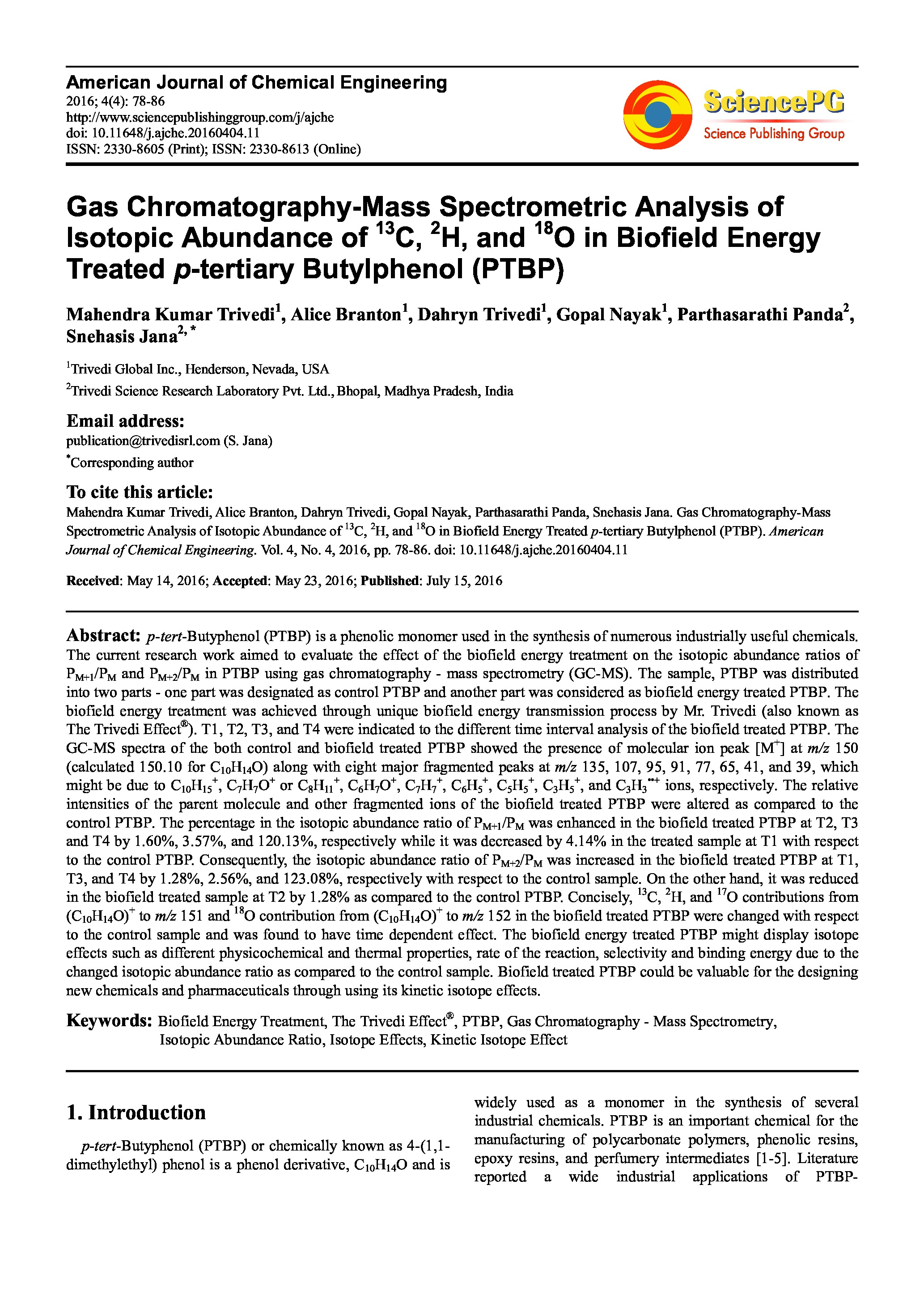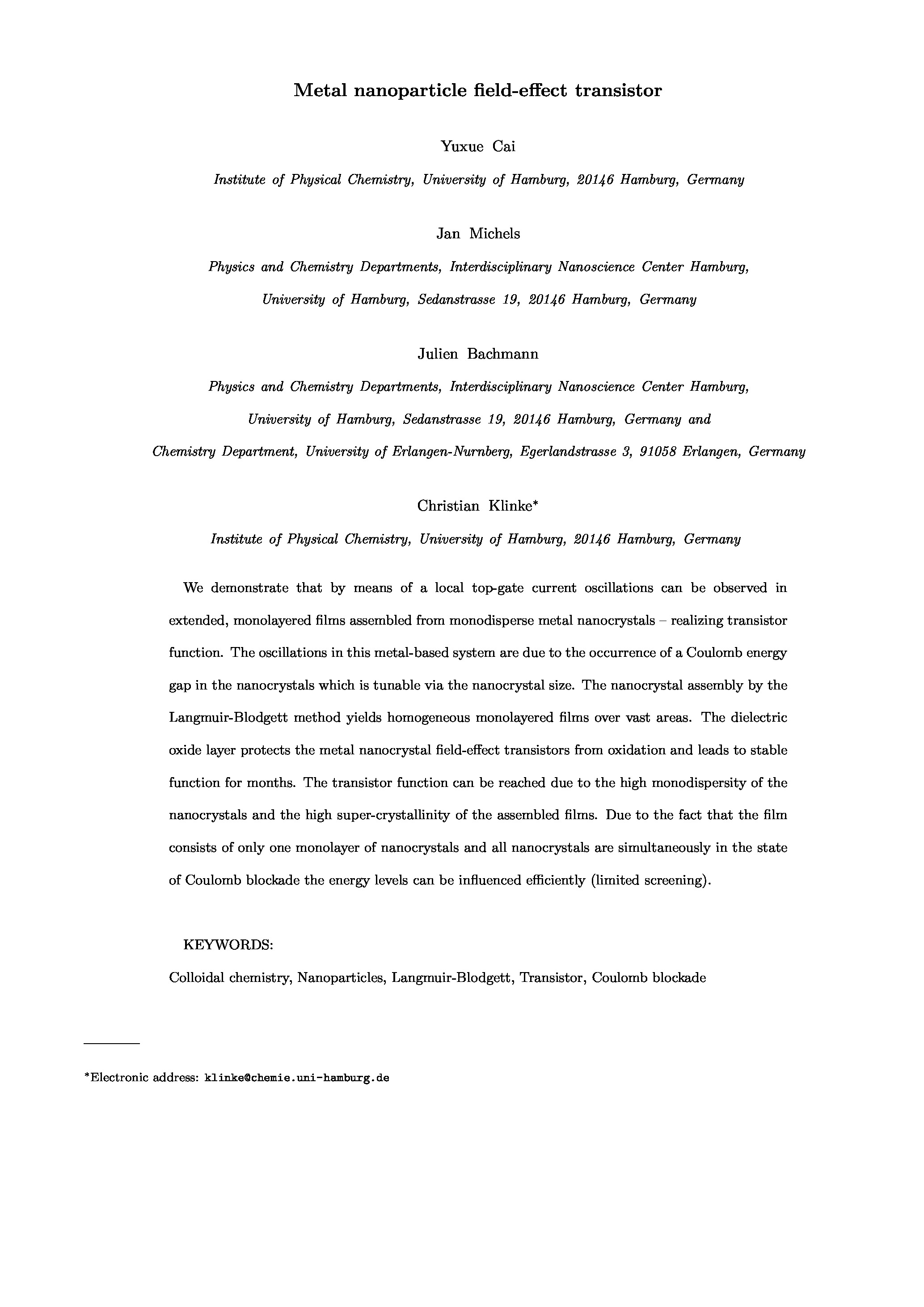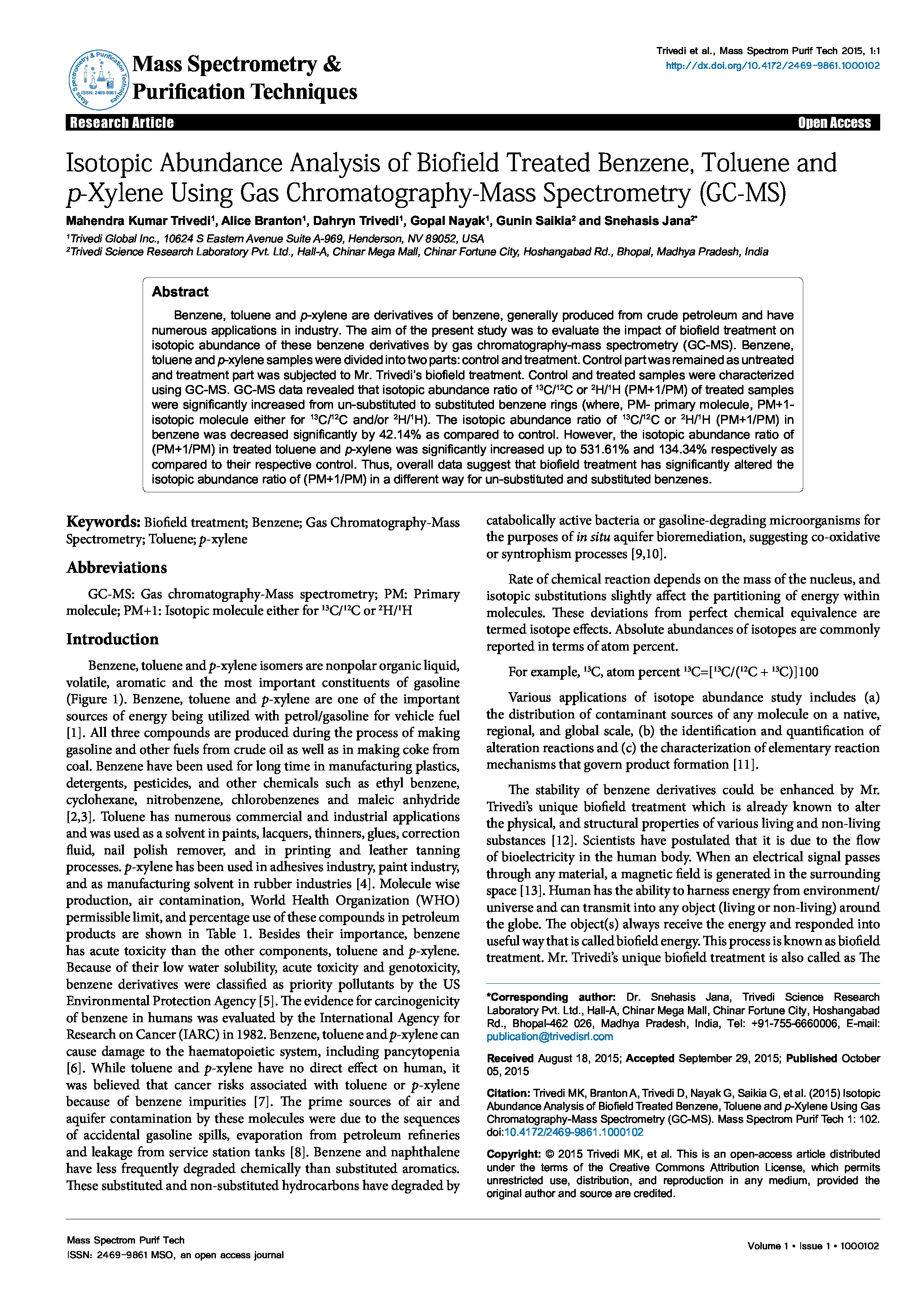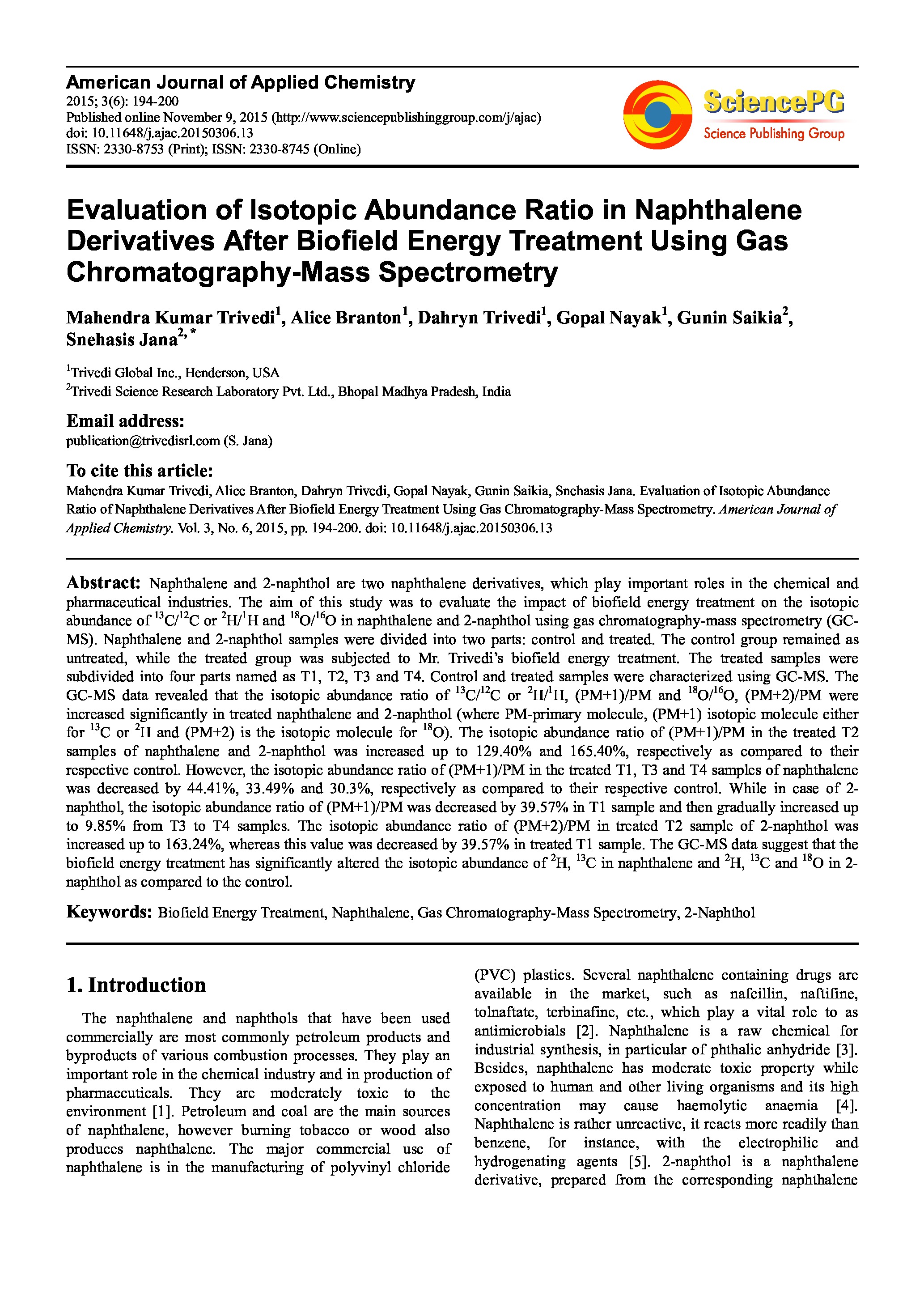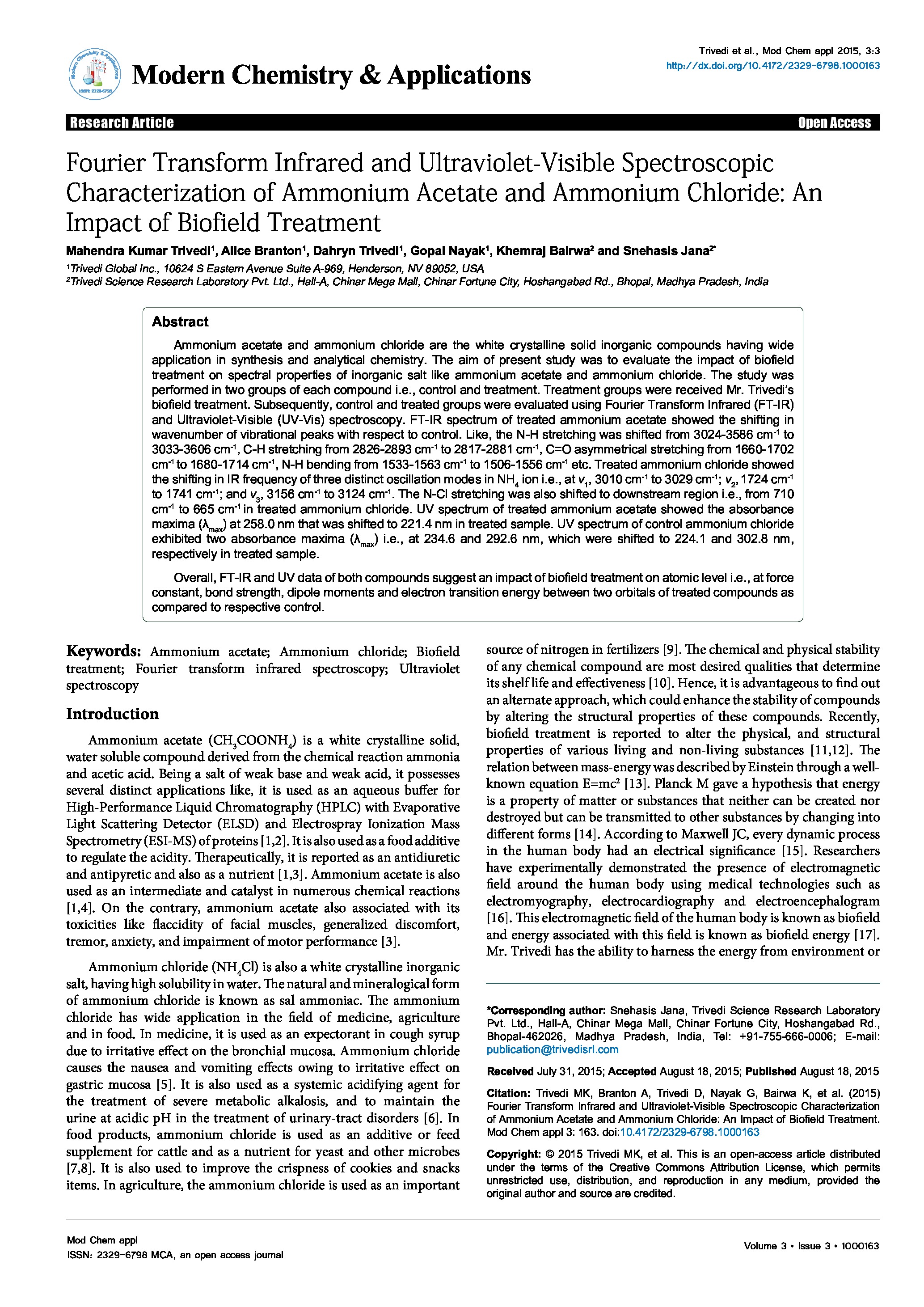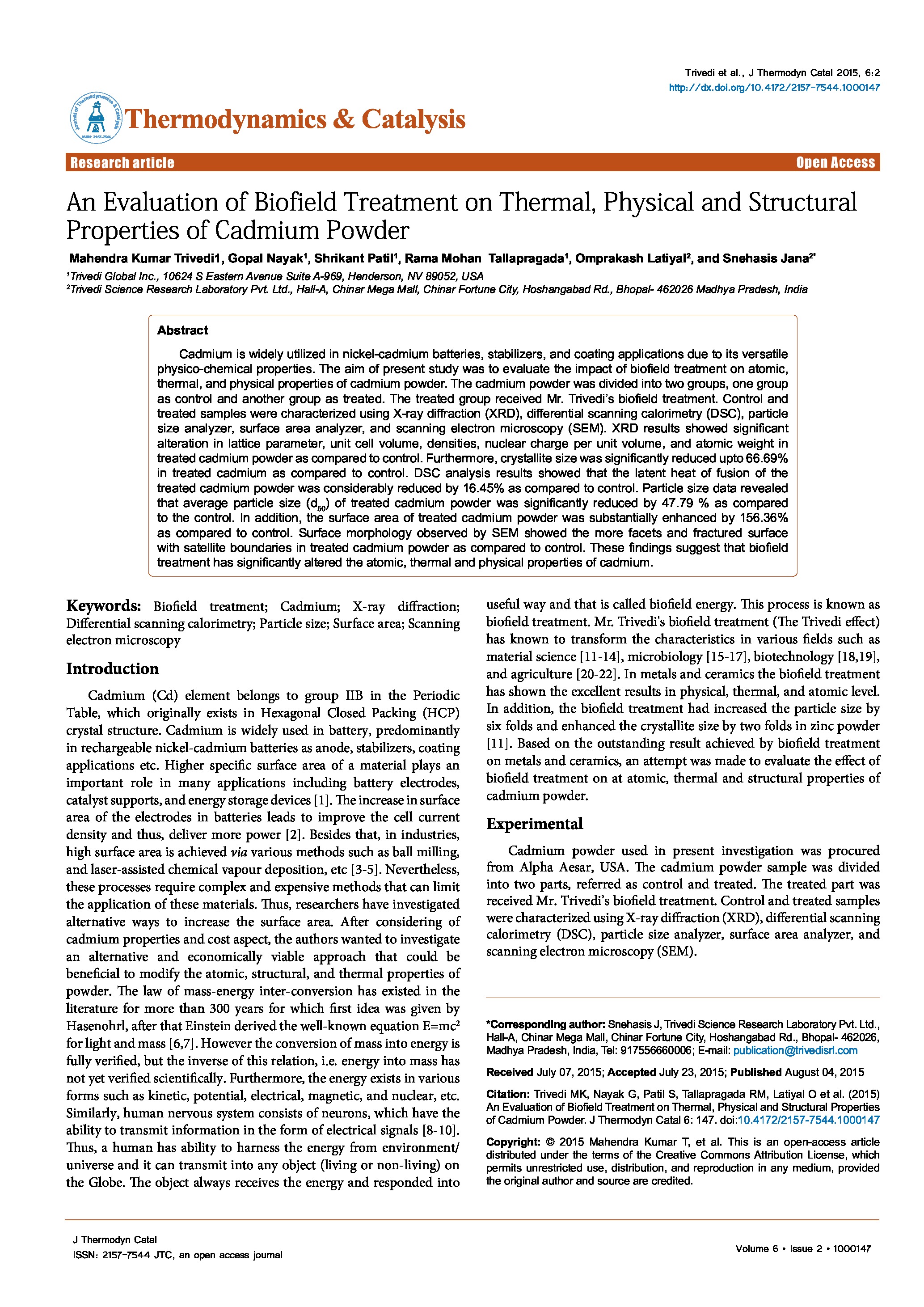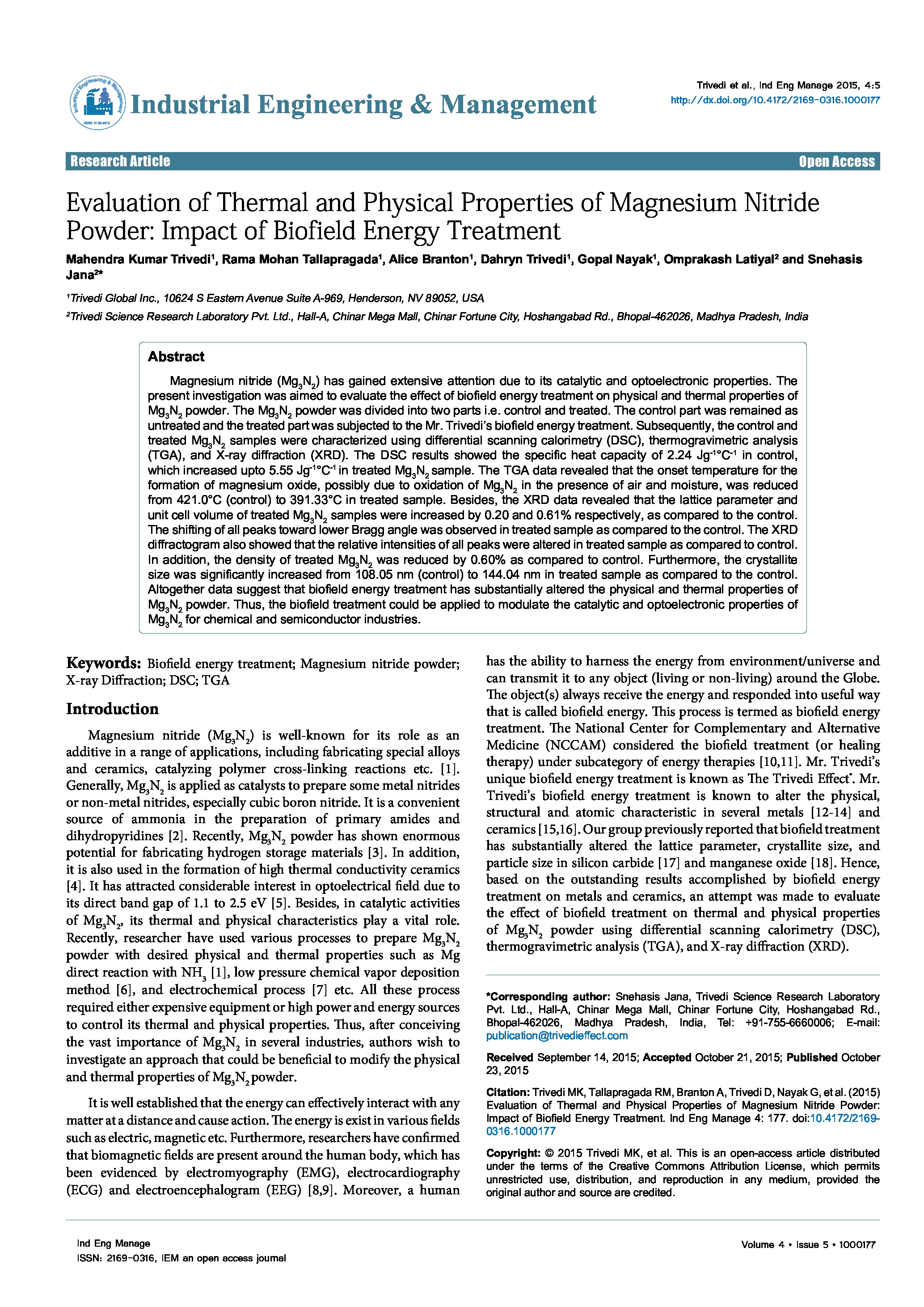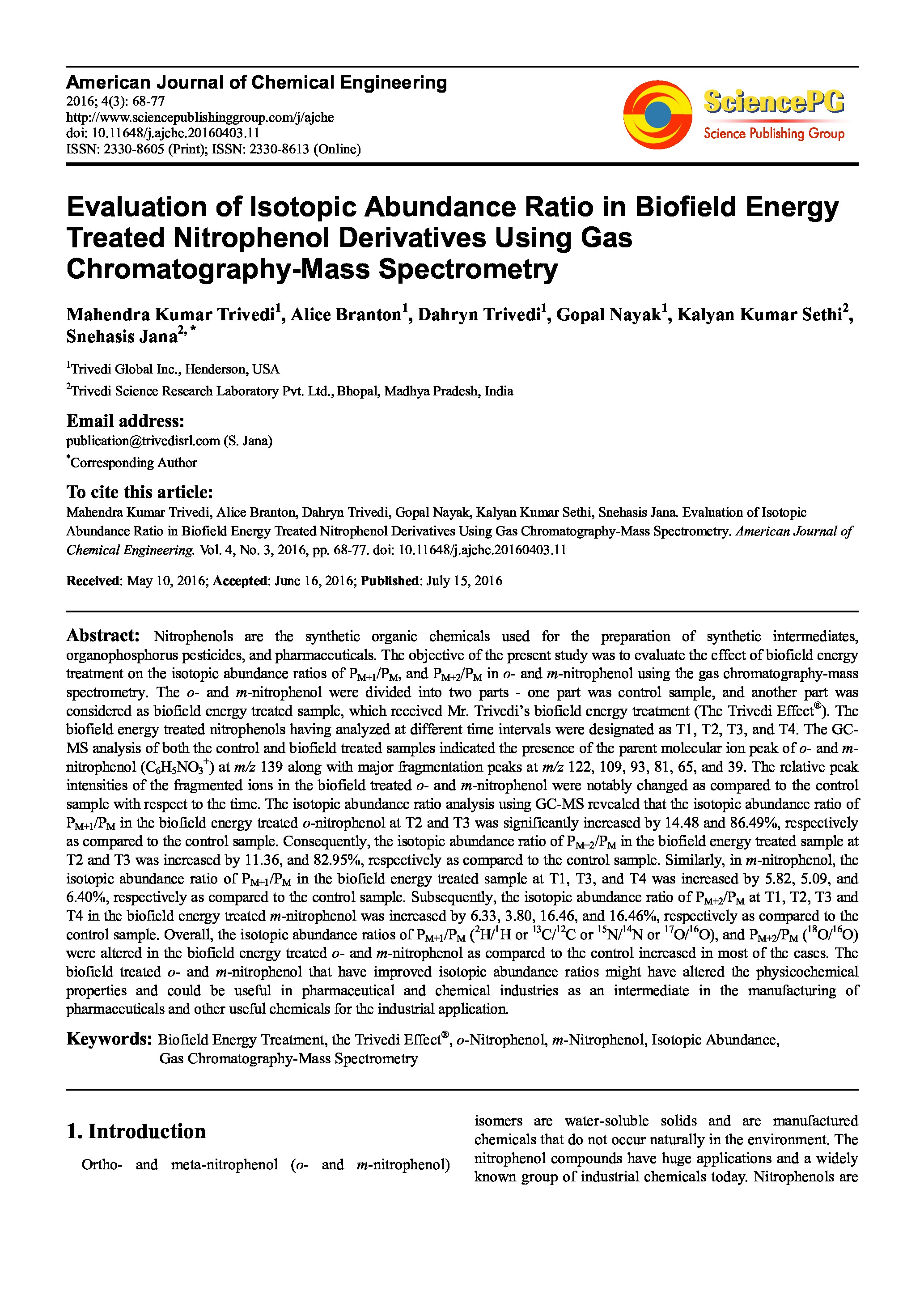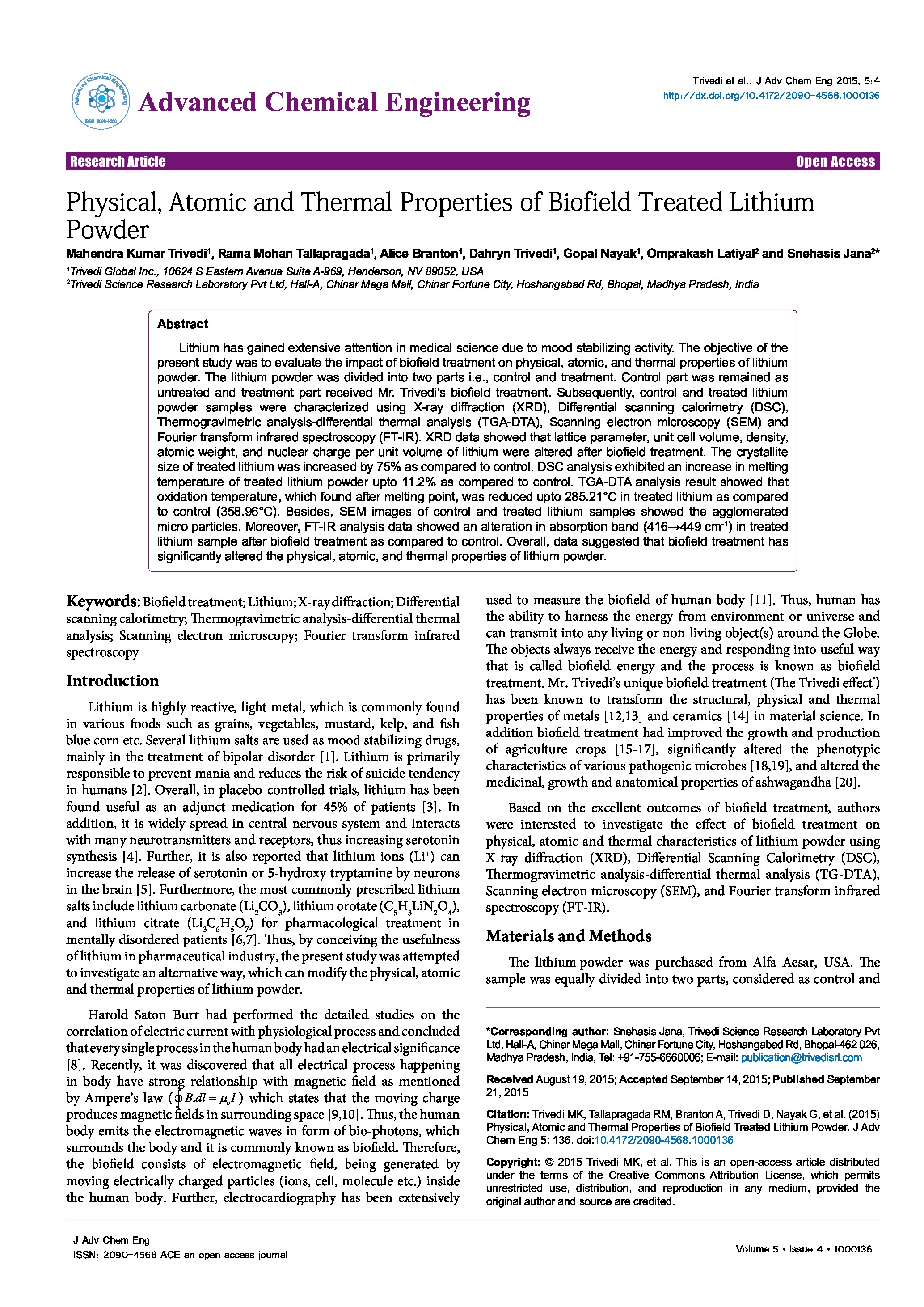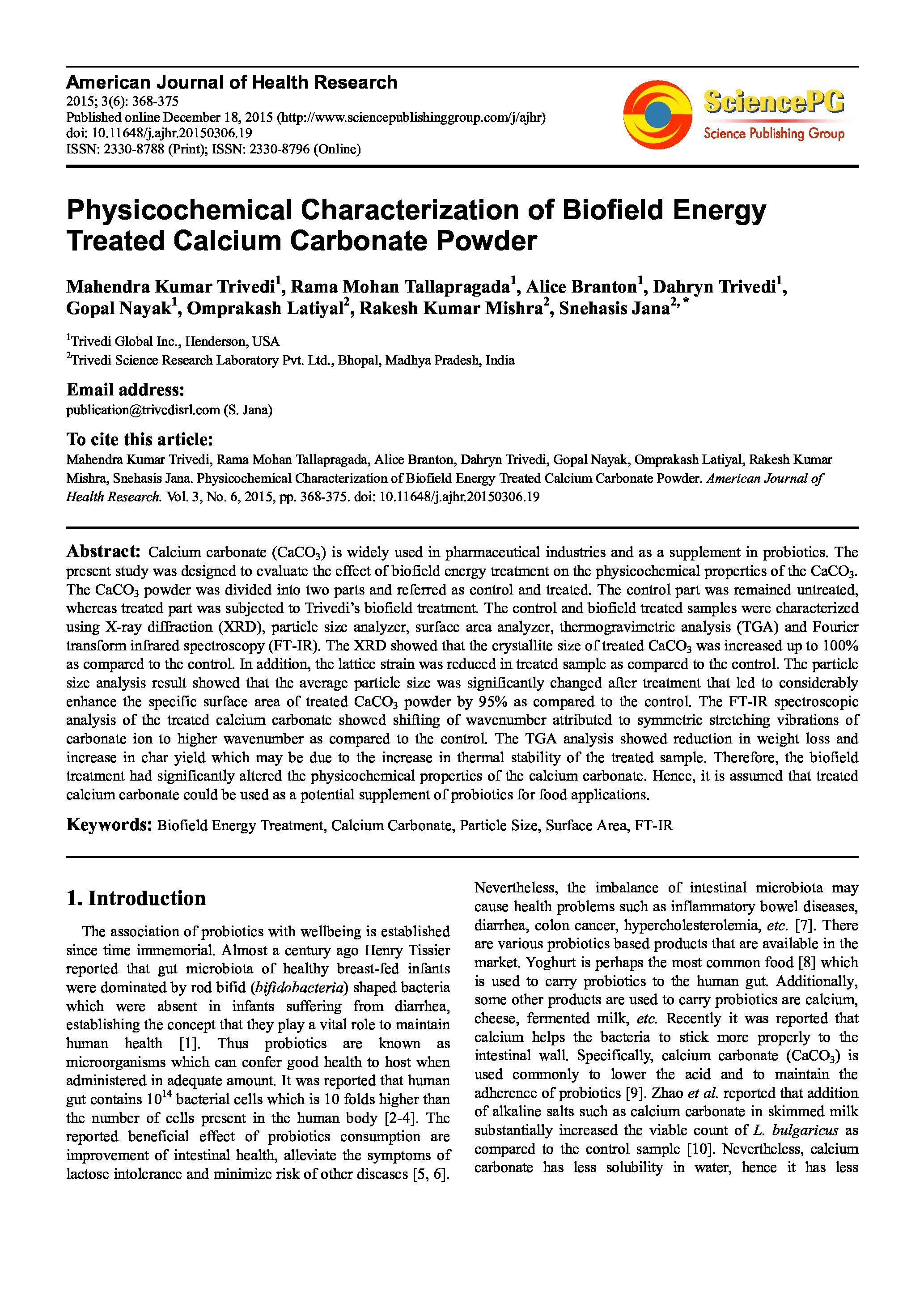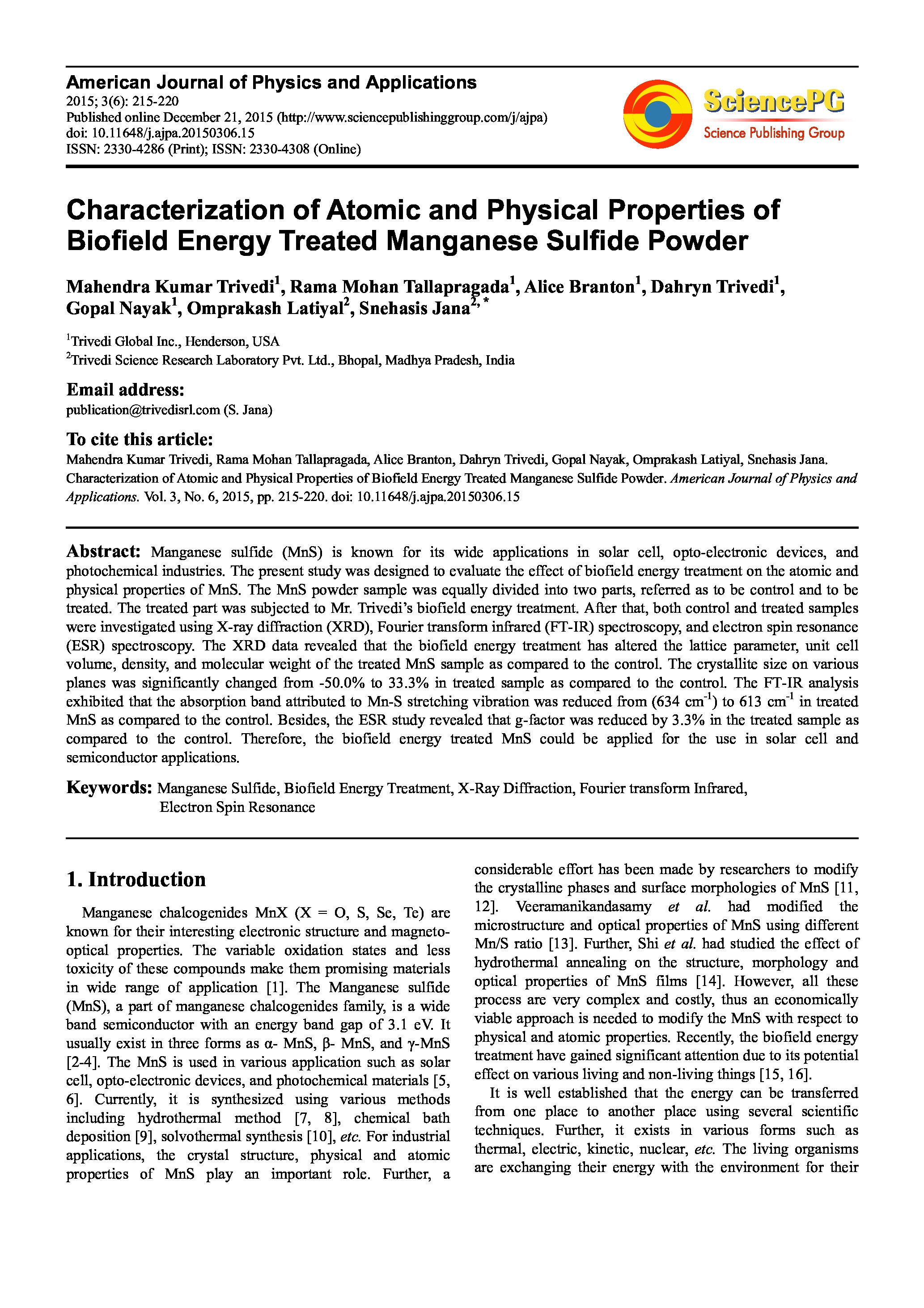Results were found under
videos, papers .
There are no videos within this category so far.
There are no presentations within this category so far.
There are no posters within this category so far.
Analytical Chemistry, Method Development (Chemistr
Gas Chromatography-Mass Spectrometric Analysis of Isotopic Abundance of 13C, 2H, and 18O in Biofield Energy Treated p-tertiary Butylphenol (PTBP)
Natural Sciences (Analytical Che...
Date of upload:
14.12.2016
Co-author:
Mahendra Kumar Trivedi, Alice Branton, Dahryn Trivedi, Parthasarath...
Abstract:
p-tert-Butyphenol (PTBP) is a phenolic monomer used in the synthesi...
Metal nanoparticle field-effect transistor
Natural Sciences (Physics)
Date of upload:
20.08.2015
Co-author:
Yuxue Cai, Jan Michels, Julien Bachmann, Christian Klinke
Abstract:
We demonstrate that by means of a local top-gate current oscillatio...
Influence of Biofield Treatment on Physicochemical Properties of Hydroxyethyl Cellulose and Hydroxypropyl Cellulose
Natural Sciences (Analytical Che...
Date of upload:
12.07.2016
Co-author:
Gopal Nayak, Shrikant Patil, Rama Mohan Tallapragada, Rakesh Mishra
Abstract:
Cellulose based polymers have shown tremendous potential as drug de...
Isotopic Abundance Analysis of Biofield Treated Benzene, Toluene and p-Xylene Using Gas Chromatography-Mass Spectrometry (GC-MS)
Natural Sciences (Analytical Che...
Date of upload:
17.08.2016
Co-author:
Alice Branton, Dahryn Trivedi, Gopal Nayak, Gunin Saikia, Snehasis ...
Abstract:
Benzene, toluene and p-xylene are derivatives of benzene, generally...
Evaluation of Isotopic Abundance Ratio in Naphthalene Derivatives After Biofield Energy Treatment Using Gas Chromatography-Mass Spectrometry
Natural Sciences (Analytical Che...
Date of upload:
17.09.2016
Co-author:
Alice Branton, Dahryn Trivedi, Gopal Nayak, Gunin Saikia, Snehasis ...
Abstract:
Naphthalene and 2-naphthol are two naphthalene derivatives, which p...
Fourier Transform Infrared & Ultraviolet-Visible Spectroscopic Characterization of Ammonium Acetate & Ammonium Chloride: Impact of Biofield Treament
Natural Sciences (Analytical Che...
Date of upload:
23.12.2016
Co-author:
Mahendra Kumar Trivedi, Alice Branton, Gopal Nayak, Khemraj Bairwa,...
Abstract:
Ammonium acetate and ammonium chloride are the white crystalline so...
An Evaluation of Biofield Treatment on Thermal, Physical and Structural Properties of Cadmium Powder
Natural Sciences (Analytical Che...
Date of upload:
24.12.2016
Co-author:
Mahendra Kumar Trivedi, Shrikant Patil, Rama Mohan Tallapragada, Om...
Abstract:
Cadmium is widely utilized in nickel-cadmium batteries, stabilizers...
Evaluation of Thermal and Physical Properties of Magnesium Nitride Powder: Impact of Biofield Energy Treatment
Natural Sciences (Analytical Che...
Date of upload:
29.11.2016
Co-author:
Mahendra Kumar Trivedi, Rama Mohan Tallapragada, Alice Branton, Dah...
Abstract:
Magnesium nitride (Mg3N2) has gained extensive attention due to its...
Evaluation of Isotopic Abundance Ratio in Biofield Energy Treated Nitrophenol Derivatives Using Gas Chromatography-Mass Spectrometry
Natural Sciences (Analytical Che...
Date of upload:
27.07.2016
Co-author:
Alice Branton, Dahryn Trivedi, Gopal Nayak, Kalyan Kumar Sethi, Sne...
Abstract:
Nitrophenols are the synthetic organic chemicals used for the prepa...
Physical, Atomic and Thermal Properties of Biofield Treated Lithium Powder
Natural Sciences (Analytical Che...
Date of upload:
22.12.2016
Co-author:
Mahendra Kumar Trivedi, Rama Mohan Tallapragada, Alice Branton, Dah...
Abstract:
Lithium has gained extensive attention in medical science due to mo...
Physicochemical Characterization of Biofield Energy Treated Calcium Carbonate Powder
Natural Sciences (Analytical Che...
Date of upload:
19.12.2016
Co-author:
Mahendra Kumar Trivedi, Rama Mohan Tallapragada, Alice Branton, Dah...
Abstract:
Calcium carbonate (CaCO3) is widely used in pharmaceutical industri...
Characterization of Atomic and Physical Properties of Biofield Energy Treated Manganese Sulfide Powder
Natural Sciences (Analytical Che...
Date of upload:
21.12.2016
Co-author:
Mahendra Kumar Trivedi, Rama Mohan Tallapragada, Alice Branton, Dah...
Abstract:
Manganese sulfide (MnS) is known for its wide applications in solar...
